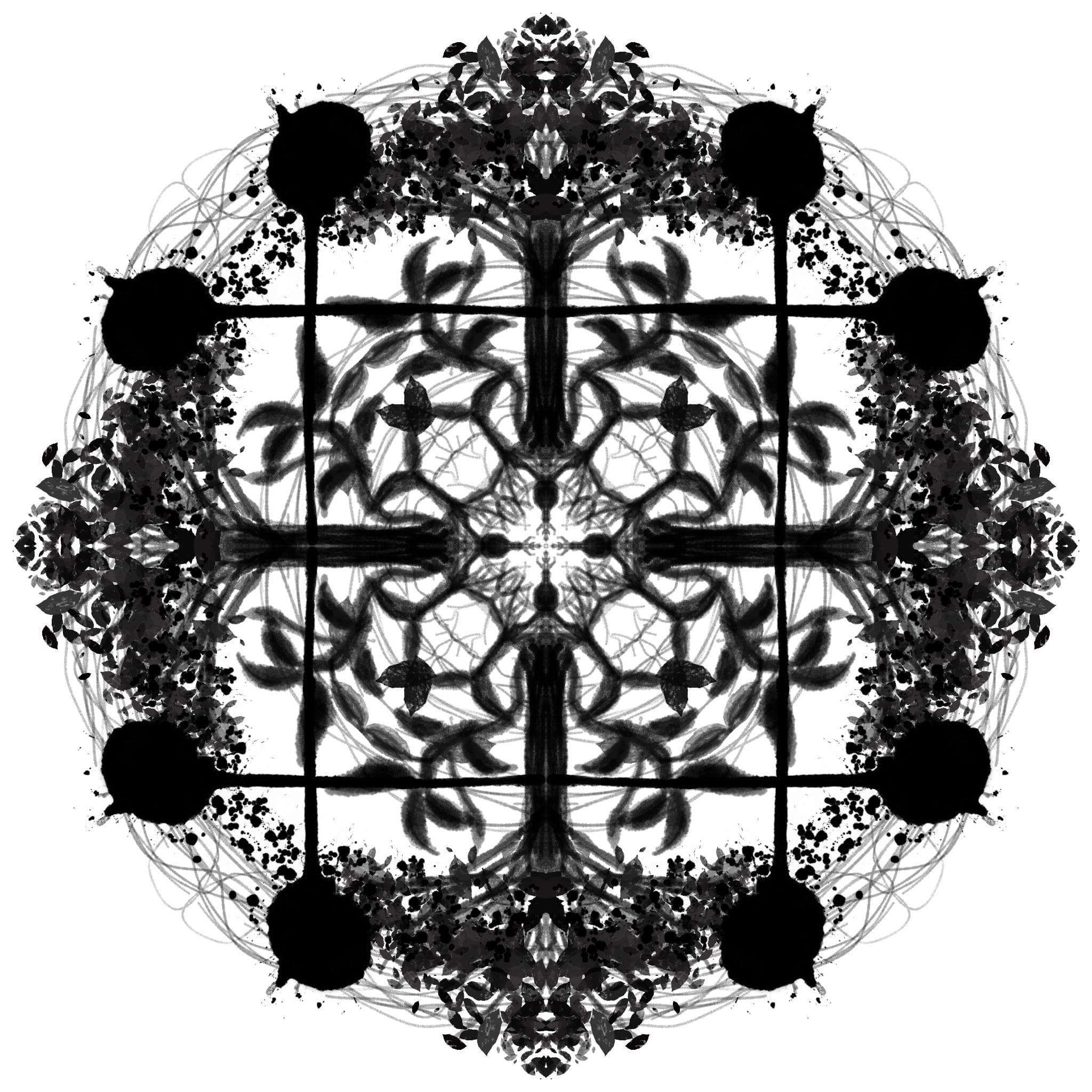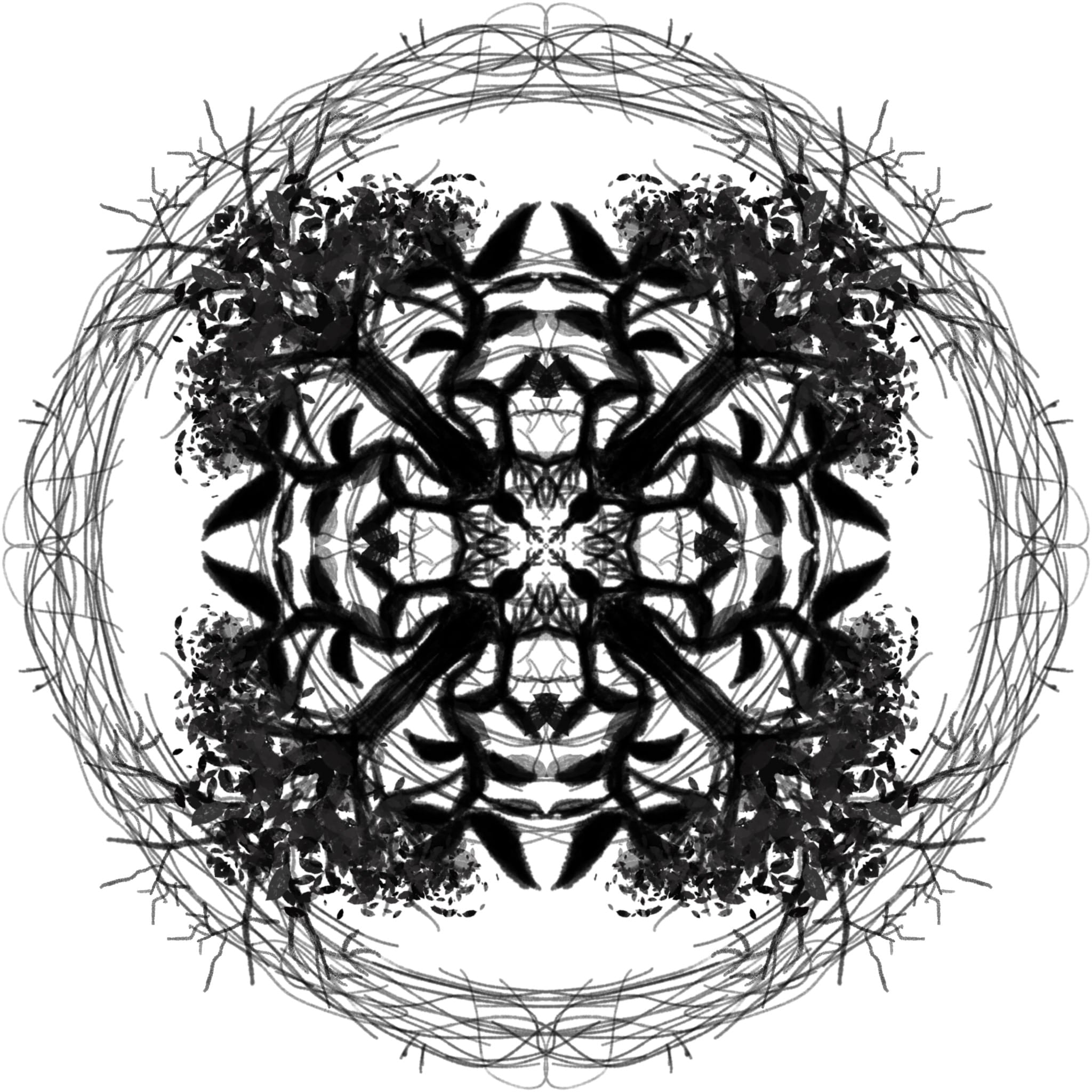Author: Damon Chen, Stella Cai
On the earth, besides humans like us, there is another kind of living organism called plants. They come in forms utterly different from humans, but they are indispensable to the biosphere. Thus, we will explain the life cycle of plants to you, our heptapod friends. Now, process create-endpoint inclusive-we (let’s start) (Ted Chiang, 36). Our linguistic expert said that your written language is a semagram system that looks like our primitive sign system (Chiang, 12). Thus we create this semagram (see the pioneer plaque below). This semagram is similar to mandalas in our culture. However, we alter it to make it even more symmetric, two-dimensional and circular so you can better understand it from your writing habits.

Semagram 1: Plant (verb.)
Since the Hetapod has a simultaneous consciousness mode, every mark or stroke on a page was visible simultaneously. Taking advantage of the page’s two-dimensionality, this semasiographic writing offers an entire page full of morphemes all at once, instead of doling out one at a time or in sequential order in speech (Chiang, 11). The semagram of “plant” also utilizes this quality. For our Heptapod friends, any life forms are seen as a cycle, either alive or dead. Classifying life forms in different stages is meaningless to you. This semagram of plants can only be read simultaneously without any order and direction because all the plants’ stages are represented at once.
Like your not word-divided script, the concept, plant, is written by joining the semagrams for the constituent elements of a plant by rotation (Chiang, 11). Typically and specifically, the seeds, roots, shoots, branches, leaves, fruits, flowers. Each of them is considered a plant but in different stages and forms. Chiang said, in your language, “there was no… ‘train of thought’ moving along a particular route; all the components in an act of reasoning were equally powerful, all having identical precedence” (26). The most exciting thing about plants and this semagram is the same: the forms are interchangeable and co-exist. Seed can become root and shoot, and when it dies or withered, it will return to the soil as fertilizer and grow again. Dead branches can also sprout and grow under the right conditions. The same goes for leaves, fruits, and flowers.

Semagram 2: Plant (noun.)
In your language, “inflections could be indicated by varying a certain stroke’s curvature, or its thickness, or its manner of undulation; or by varying the relative sizes of two radicals, or their relative distance to another radical, or their orientations; or various other means. These were non-segmental graphemes; they couldn’t be isolated from the rest of a semagram” (Chiang, 17). Then, can this semagram tell a different story? Here comes our second semagram. As you can see, this semagram looks almost the same as the one we just saw. They have the same elements but with different relative distance and thickness. The strove in the first semagram is variable, from light to thick. Once again, it represents a different stage of the plant, young or mature. It creates a sense of motion of the semagram, making it a verb meaning plant grows, plant, establish, reproduce, and so on. In contrast, the stroke in the second diagram is more fixed and static. Thus it is a noun that means life, fruit, flower, plant in general.
Reference:
Chiang, Ted (2015a) [2002]. “Story of Your Life”. Stories of Your Life and Others (e-book ed.). Picador. p. 76. ISBN 978-1-4472-8198-6.